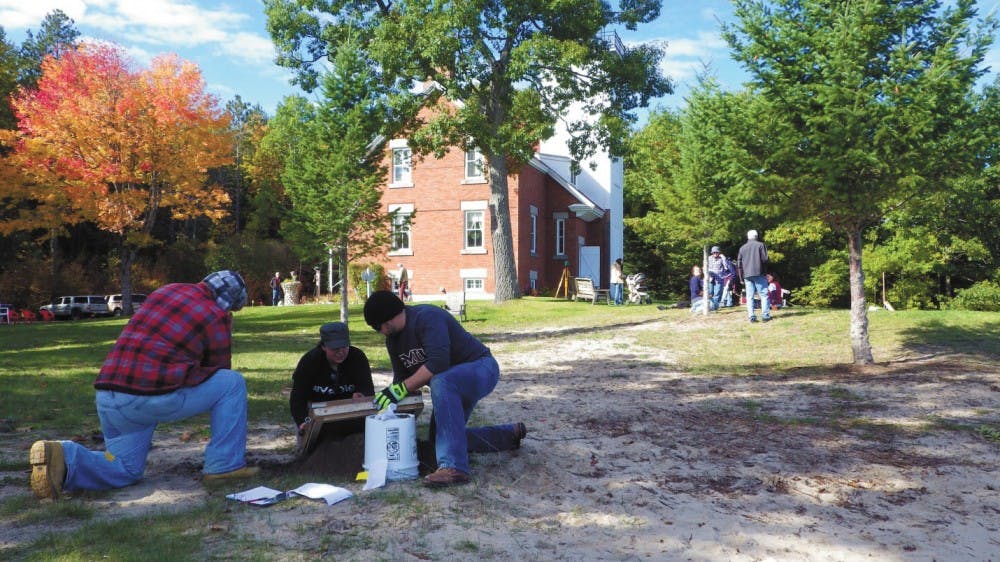Protecting the past

Students in ANT 645 travelled to 40 Mile Point on Lake Huron in October for an exploratory dig, where they located bricks, animal bones marked from butcher knives and other artifacts.
Central Michigan University's new Cultural Resource Management Program will diversify the career options of graduates through cross-training in the related fields of anthropology and archeology, museum studies and public history.
"Cultural resources are anything from historic buildings from archeological sites to artifacts that were buried," said the program's interim president Tim Hall. "All sites where there has been evidence of native activity, especially sustained evidence. Cultural resource management is managing those resources."
There are 11 students currently enrolled in the program, and this number will grow to 21 in the fall.
Vice President of CRM Graduate Society Brad Collins works in the Museum of Cultural and Natural History in Rowe, and will focus on the museum studies aspect of the program, but he will also get experience in the fields of anthropology and public history.
Collins while studying anthropology and archeology in anthropology faculty Surface-Evans' ANT 645: Cultural Resource Management in Archeology Class, travelled to 40 Mile Point on Lake Huron in October for an exploratory dig, where students located bricks, animal bones marked from butcher knives and other artifacts.
"Every aspect of cultural resources is covered in this program," Collins said. "We have people digging (artifacts) up, people curating those artifacts and then people who can teach others about them."
Brittney Fremion, Jay Martin and Sarah Surface-Evans represent the fields of public history, museum studies and anthropology/archeology within the program.
"I represent the history department and the public history program in the program," history faculty Brittney Fremion said.
"Although people are cross-trained in all three of these disciplines, even if people are focused in museum studies, they get more classwork and more opportunities for hands-on research and experiential development," Martin said. "There's a very large group of people who work in museums who are interested in this program and reputation our preexisting undergraduate program has."
"Cultural resource management archeology might mean determining whether or not (state or federal) projects will damage something of significance," Surface-Evans said. "Private firms also hire archeologists to do that work."
"We're creating a unique niche for CMU in developing this CRM program," she said. "A lot of academic programs out there are not really focused on bringing history and heritage to communities and working with communities. We're focused on preparing students who are able to talk to the public and who can help the bigger goal of improving preservation of the cultural heritage of Michigan and the Great Lakes."
Classes began in the fall, starting eight students on the multidisciplinary program that will train them to preserve, advocate for and study cultural resources.
Hall said the application for this degree is growing.
This career path offers jobs in the private, such a CRM consultant, who surveys a region scheduled for development to ensure that no historical or cultural artifacts are harmed.
This graduate program will also offer students the opportunity to work in the National Parks Service as supervisors, as well as positions in museums.
President of the new Cultural Resource Management Graduate Student Society Steven Smendzuik was initially interested in history, but was seeking a job that would allow him to work directly with historical sites and artifacts outside.
"We can return the past to those who have lost it," Smendzuik said.
This RSO is seeking funding and membership to attend conferences and gain more experience in their respective fields, Smedzuik said.
This program's initial success stemmed from a smooth creation process and student interest in the program.
"We've exceeded our enrollment expectations," Fremion said. "It made it through the curricular process faster than we thought and we just had students that were interested in the program when they found out we were developing it. So instead of putting it off for another year, we went ahead and did it."



